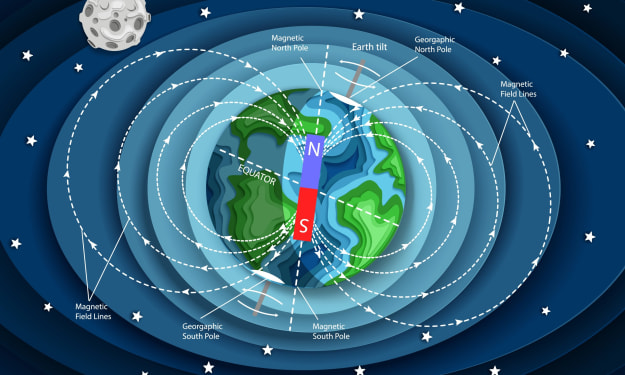The Wild, Wacky World of Science: AR and VR Edition!
Where Science and Art Collide in a Spectacularly Absurd Fashion
Buckle up, folks! We're about to dive into the mind-bending, jaw-dropping universe of Augmented Reality (AR) and Virtual Reality (VR) in the service of science art. Picture this: you’re cruising through the veins of a human body, dodging white blood cells like you're in a high-speed car chase on the Fast & Furious set, all while learning about the circulatory system. Or imagine wrangling DNA strands like they’re feral cats on a reality TV show, each nucleotide more dramatic than the last. That’s the wacky, wonderful world we’re exploring today.
Let's get this AR and VR shindig started. AR and VR are like the dynamic duo of the digital age, Batman and Robin, but with less brooding and more wow factor. AR layers digital magic over the real world, turning your living room into a science lab where atoms do the cha-cha and Newton’s laws play out like a scene from an Avengers movie. VR, on the other hand, is the full-on Matrix experience—minus the existential dread and Keanu Reeves’s deadpan delivery. You strap on a headset and boom, you’re transported to a fully immersive digital world where science and art can tango like never before.
Picture this: an interactive 3D model of the human body that you can poke, prod, and spin like a contestant on The Price Is Right, but instead of winning a car, you win a solid understanding of anatomy. Want to see how your heart pumps blood? Just dive in and watch those ventricles work harder than a contestant on Survivor. Need to get up close and personal with a neuron? Slide right in and navigate its dendritic labyrinth like you’re solving a Rubik’s Cube on crack.
And it doesn’t stop there. Molecular structures come alive in VR, turning the dry, dusty pages of your high school chemistry book into an interstellar journey through the microcosm. Imagine zipping through the bonds of a water molecule like you’re piloting the Millennium Falcon, dodging covalent bonds like they’re Tie Fighters. Every electron is a plot twist in the greatest science fiction story never told.
Now, let’s not forget about AR, the cheeky little cousin of VR. Remember Pokémon Go? That addictive game where you wandered the streets like a zombie trying to catch virtual critters? Well, swap out Pikachu for paramecia, and you’ve got yourself an AR science adventure. Hold up your phone and watch as the invisible world of microbes springs to life in your kitchen. Suddenly, that moldy bread in your pantry isn’t a health hazard; it’s an educational goldmine!
AR can transform a boring old classroom into a science fiction set where Newton’s cradle isn’t just a desk toy—it’s a demonstration of the laws of motion with Newton himself dishing out commentary like a sports announcer. “And there goes the second ball, folks, transferring momentum faster than a Kardashian’s latest scandal goes viral!”
Here’s where it gets really juicy: VR and AR can turn museums into immersive wonderlands. Imagine walking into a room and finding yourself inside Van Gogh’s “Starry Night,” but instead of just staring at it, you’re flying through it like a crazed art connoisseur with a jetpack. Every brushstroke is a roller coaster, every star a pulsating beacon of pure artistry. And as you soar, you’re learning about the cosmic phenomena that inspired ol’ Vincent, linking art and science in a way that’s more mind-blowing than discovering your favorite celeb is an alien.
But wait, there’s more! AR and VR aren’t just about dazzling visuals and trippy experiences; they’re revolutionizing science education with art. This dynamic duo is making abstract concepts tangible, turning the “Huh?” into “Aha!” faster than you can say “Einstein’s theory of relativity.” Remember struggling with the periodic table, trying to memorize those pesky elements like they were random characters from a poorly written soap opera? With AR, you can watch them interact in real time, each element revealing its personality like contestants on a dating show. “Will Carbon find true love with Oxygen, or will it be a fleeting affair with Hydrogen? Stay tuned to find out!”
And let’s not forget the applications in medical training. VR can simulate surgeries with such precision that med students can practice their skills without the risk of becoming the next Dr. Frankenstein. It’s like playing Operation, but with way more at stake and no annoying buzzer. Surgeons can navigate the human body like it’s an episode of Grey’s Anatomy, minus the melodrama but keeping all the life-saving action.
As for AR, it’s turning textbooks into living, breathing entities. Picture a biology book where each page comes alive with 3D animations. Frog dissections? Ancient history! Now you can dissect a virtual frog, and instead of the classroom smelling like a swamp, it smells like victory (and possibly pizza, if your school cafeteria is nearby). Diagrams leap off the page, performing interpretive dances that make even the most stoic students crack a smile.
And the best part? This blend of AR and VR makes learning a multi-sensory extravaganza. You’re not just reading about the Krebs cycle; you’re living it. You’re feeling the ATP production, sensing the electron transport chain like it’s the hottest nightclub in town. It’s immersive, it’s interactive, and it’s more fun than a barrel of genetically engineered monkeys.
In conclusion, AR and VR are not just the future of science education with art—they’re the present, and they’re here to stay. They’re turning the mundane into the magical, the dull into the dynamic. They’re making science as entertaining as a Marvel movie marathon, as addictive as scrolling through TikTok, and as enlightening as a TED Talk given by Bill Nye on a sugar high. So, next time you hear someone say science is boring, just pop an AR headset on their noggin and watch their mind explode like a Mentos in Diet Coke. Science education has never been so lit.
About the Creator
ScienceStyled
Exploring the cosmos through the lens of art & fiction! 🚀🎨 ScienceStyled makes learning a masterpiece, blending cutting-edge science with iconic artistic styles. Join us on a journey where education meets imagination! 🔬✨
Enjoyed the story? Support the Creator.
Subscribe for free to receive all their stories in your feed. You could also pledge your support or give them a one-off tip, letting them know you appreciate their work.







Comments (1)
Hi, Sciencestyled I didn't know this about AR & VR it was really informative but I saw an AI-generated tag on the article. So just curious about it is vocal paying in reads on ai AI-generated content.